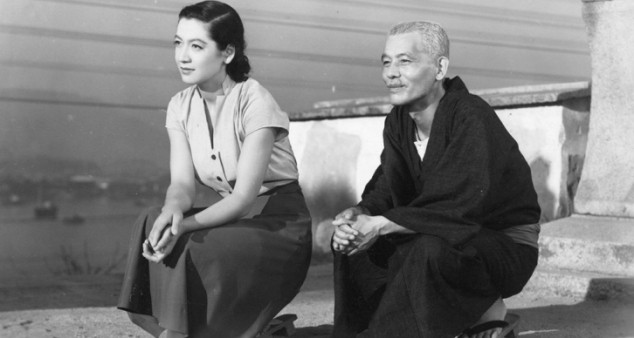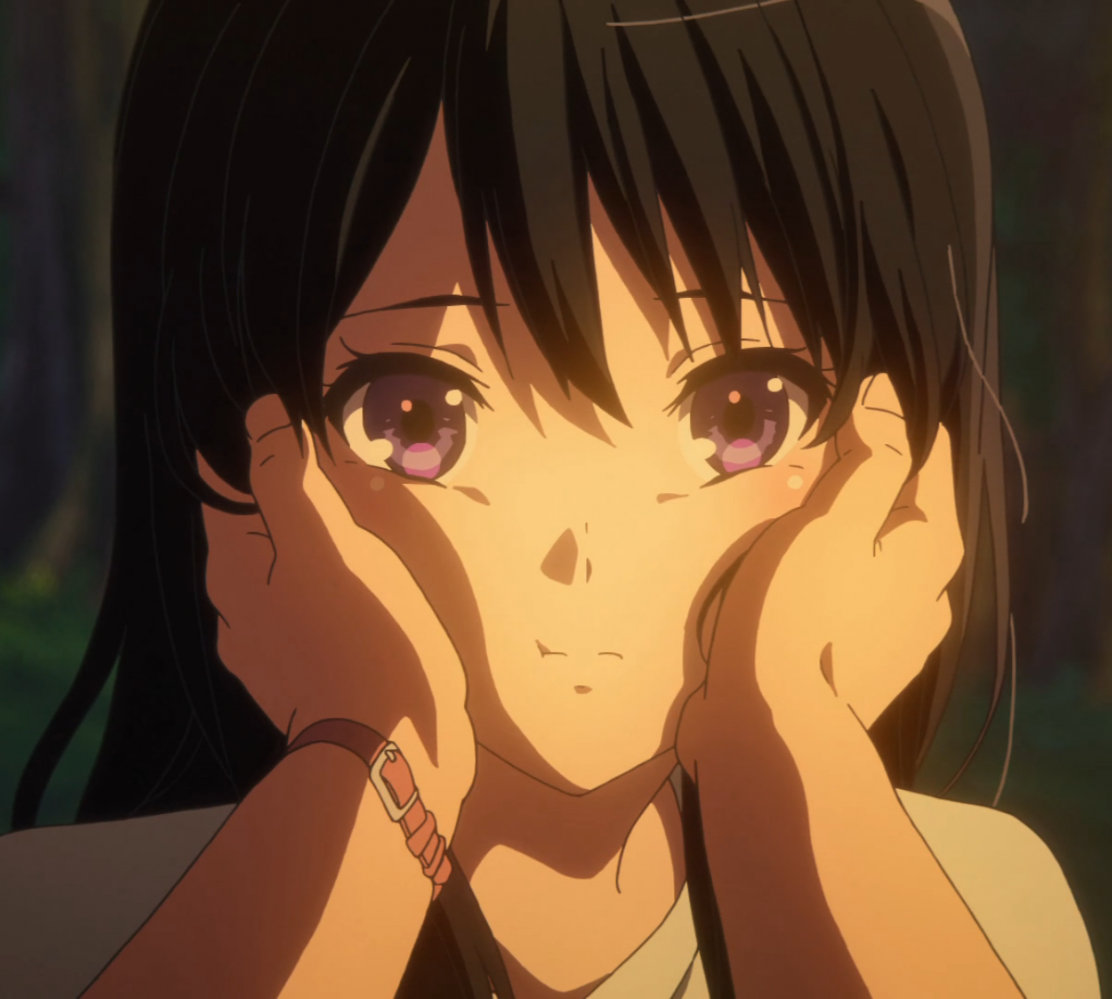
[Preface: Here’s another essay I wrote, this time for an art history class. I know I typically only write about anime and the occasional video game here, but I figured this might make for an interesting read considering Tokyo Monogatari is widely considered a masterwork in film, taught in any intro film class worth its salt. It is also Japanese, which almost makes it anime! Perhaps give it a chance!]
Yasujiro Ozu (1903-1963) is a master of film, remembered and revered by directors and scholars alike. His work has and will continued to be studied until likely the end of film itself. Tokyo Story 東京物語 (1953) is an impeccable piece of art, well known to be “one of the greatest films ever made” (G. Johnson), seen by many as second only to Citizen Kane (1941). Accolades aside, the importance of Tokyo Story could easily be shared with any of Ozu’s latest films, as he used his final years to try and capture a universal truth—something that would connect with viewers from all cultures, and all periods of time to come. All of his recognition tells us he managed to do just that, and Tokyo Story seems to be where Ozu did it best. The most interesting acknowledgement he received, however, came from his own people. According to Donald Richie, a man who was considered to be “the world’s ranking expert on Japanese cinema” by Roger Ebert himself, the Japanese have a particular description of the now famed director. “The Japanese say no director is more Japanese than Ozu. And they’re right. He is indeed profoundly Japanese” (D. Richie). Ozu crafted his cinema very carefully to earn such a title, by perfectly portraying the essence of uniquely Japanese, domestic life—in order to reinforce his themes of familial disillusionment, and of course, his universal truth.

Before we begin to understand Ozu’s special brand of cinematography, we must come to know the actual story of his films. “Almost all of [his] mature films show family members moving apart. Most of Ozu’s characters are noticeably content with their lives, but there are always indications that the family will shortly cease to be what it has been” (D. Richie 3). A daughter gets married and leaves the father alone. The parents move in with one of their children. One of the parents dies. These are just some of the many simple things Ozu yearns to elaborate on in his work. In Tokyo Story, all three of these things occur. The parents of a family travel to move in with their children, just visiting for couple days in each of their homes. They receive very little warmth and consideration from their flesh and blood families, yet when they stop by the home of their son’s widower, they’re treated infinitely better by their daughter related only by law. Shortly after the parents return home, the mother dies, causing the family to obligatorily come back together for her funeral. Most of the children leave immediately after, the ones remaining being the widower Noriko and the daughter of whom the parents live with, Kyouko. Kyouko expresses her disgust in her fellow siblings, how they’ve changed and don’t seem to have any sympathy for their mourning father. It is here that Noriko explains the drift between parents and children is inevitable. The father appreciates her more than his actual children, and so he gives her his blessing to remarry.
“[In Japan] An identification with family is necessary for a complete identification of self” (D. Richie 4). Donald Richie points out the unique importance of familial ties in Japanese culture, but then goes on to explain how, despite the uniqueness of the cultural setting, Ozu’s films mange to resonate from all corners of the globe. “Deep down, we share our essential humanness. We feel the same things. Intellectually we may be different, but emotionally we’re very much the same” (D. Richies). Of course, in the world of film, while the quality of the content being expressed does hold some weight, the real artistry comes from the way it is expressed—the quality of execution. That is what defines Yasujiro Ozu as a true master.

Onto Ozu’s cinematic style, the director certainly knows what he likes: keeping a cast of regulars, the use of similar locales, preferring the interiors of Japanese-style houses, and the inclusion of imagery he enjoyed, such as boats and trains and smokestacks. Ozu utilized what are now known as his “pillow shots”, based off the Japanese poetry term “pillow words”—words that don’t necessarily mean anything to the subject at hand, that exist for their own beauty and in turn act as a kind of punctuation. In his film, Ozu often ended his sequences with a shot of his favorite imagery and let the audience sit there and admire the billowing smoke or the passing locomotives. “It is simply a way of looking away, and regaining composure before looking back again” (R. Ebert).
The way in which he shot his film was just as particular, and different from the norm. Inside the traditional Japanese home, Ozu would always shoot from a low angle when filming his characters. “He uses low-angle shots, playing his camera about three feet above floor level, or at the eye level of a person kneeling on a tatami mat. This subtly tends to exalt his heroes, making ordinary people seem more important” (R. Ebert quoting veteran Japanese film critic Tadeo Sato). There are other interpretations of what this accomplished. Some believed this gave off an impression of intimacy. I believe that by lowering the eyeline of the film, Ozu is portraying a distinctly Japanese perspective, as even furniture is made to fit this Japanese, lower-to-the-ground lifestyle.

Another popular film guideline (if not law) that Ozu strayed away from was the 180-degree rule. Convention dictates there is an invisible 180-degree line that should not be crossed when filming a conversation, because when crossed it shows off opposite side of a character and produces a jarring sense of reflection, as well as a sense that the characters aren’t talking to each other because they’re not shown facing towards each other. Ozu masterfully broke this rule, finding a way for these conversations to be film in a non-off-putting fashion, and at the same time showing off more of this domestic space that he worked so hard to craft. “Ozu did admit, however, that ‘I am probably the only one in the world who films this way’” (M. Schilling).
Ozu was seemingly far removed from his contemporaries during the end of his career. While the industry standard for homu dorama or “family drama” was littered with “shouting, caterwauling and other melodramatics” (M. Schilling), Ozu decided to opt out for an almost intensely realistic pursuit. “Ozu refrained from underlining emotions with dramatic close-ups and surging background music” (M. Schilling), having music usually only to transition between scenes—and often the music didn’t even match the mood. It wasn’t unusual for Ozu to have cheerful music queue up after a momentously sad occasion.

Added to that is the miniscule amount of action that can be found on-screen in an Ozu film. “There is little movement in an Ozu scene, and certainly none for its own sake” (Tadeo Sato). Everything Ozu did was in effort to create a slice of life in the truest sense of the term. The story itself feels like an arbitrary sample (though it most certainly is not). There is no conflict to be seen, at least in the way we’re conditioned to understand conflict. A feeling of progression is non-existent, and without that, there really is no end. Funny, how a film could be held in such high esteem when displaying none of the traits that society considers necessary in order to tell a great story.
That’s because Ozu aims to portray something greater. “Nothing distracts you from paying attention to this family” (G. Johnson)—and that’s the point. Ozu once said, “A lot of people equate drama with sensational incident, such as someone getting killed. But that’s not drama; it’s a freak occurrence” and he meant it, dedicating his last few years to the pursuit of real drama, the somber yet painfully dull reality that exists within the home of everyone watching. “The father or mother sitting alone in the now empty house is an image common enough in Ozu’s films to serve as an epitome. These people are no longer themselves” (D. Richie). This is the harsh reality of domestic life.
It connects with everyone, regardless of culture or era. It is the reason that Ozu will continue to be remembered as one of the greatest directors throughout history—because he flawlessly captured an eternal truth, without any of the tricks nor gimmicks found in the arsenal of most every other filmmaker in existence. Ozu achieved this supreme sense of realism in his masterpiece Tokyo Story, and with it, left us one more profoundly simple truth.

Donald Richie on Yasujiro Ozu. November 19, 2013. https://www.criterion.com/current/posts/2966-donald-richie-on-yasujiro-ozu.
Ebert, Roger. “Silence Is Golden to Ozu | Roger Ebert’s Journal | Roger Ebert.” RogerEbert.com. August 14, 1994. https://www.rogerebert.com/rogers-journal/silence-is-golden-to-ozu.
Johnson, Gabe. Critics’ Picks: ‘Tokyo Story’. September 21, 2010. https://www.nytimes.com/video/movies/1248069064787/critics-picks-tokyo-story.html.
Richie, Donald. Ozu: His Life and Films. Berkeley: University of California Press, 1974.
Schilling, Mark. “Re-examining Yasujiro Ozu on Film.” The Japan Times. December 7, 2013. https://www.japantimes.co.jp/culture/2013/12/07/films/re-examining-yasujiro-ozu-on-film/.
Tokyo Story. Directed by Yasujiro Ozu. Performed by Setsuko Hara, Chishuu Ryuu. Japan: Shochiku, 1953. Film.

Interesting analysis and points there about cinematography & story telling styles in relation to slice-of-life & drama. I don’t watch old Japanese films, so your article is really informative!
LikeLiked by 2 people
this
i like
have a nice day
LikeLiked by 2 people